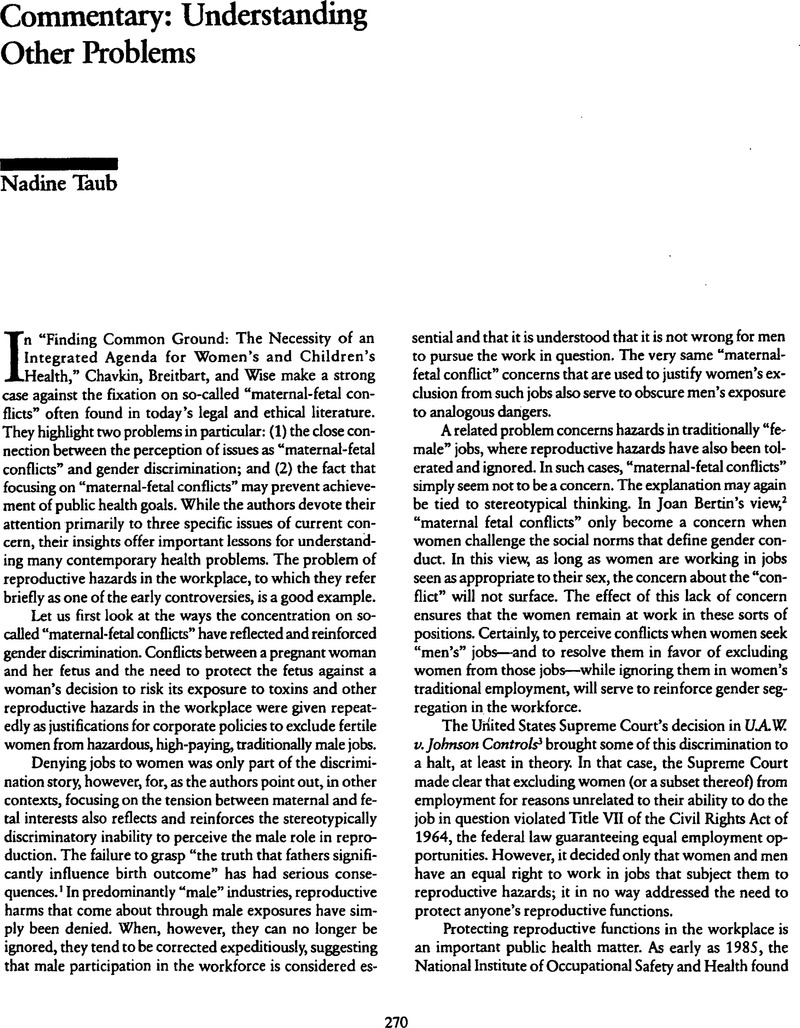For example, eligibility for benefits under Norwegian provisions affording some women special entitlements and temporary leaves from hazardous work assignments during pregnancy is determined by factors used in predicting birth outcome only.
Strand, Kitty,
“Gender, Work and Reproduction: The Example of the Health Care Area,” presentation at the ProHealth Care Conference,
Stockholm, June 27,
1994.
Google Scholar